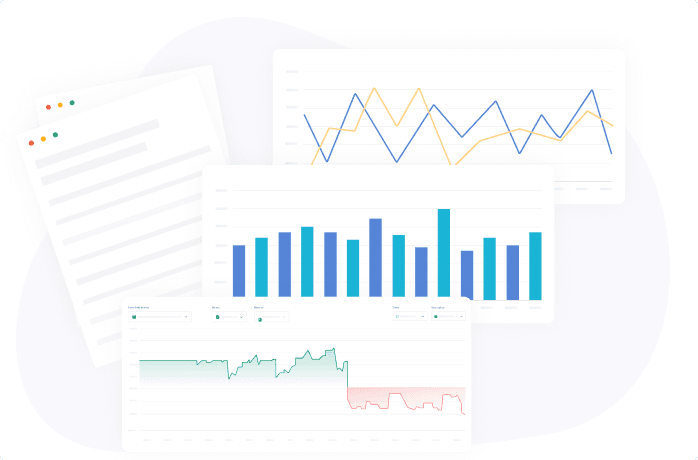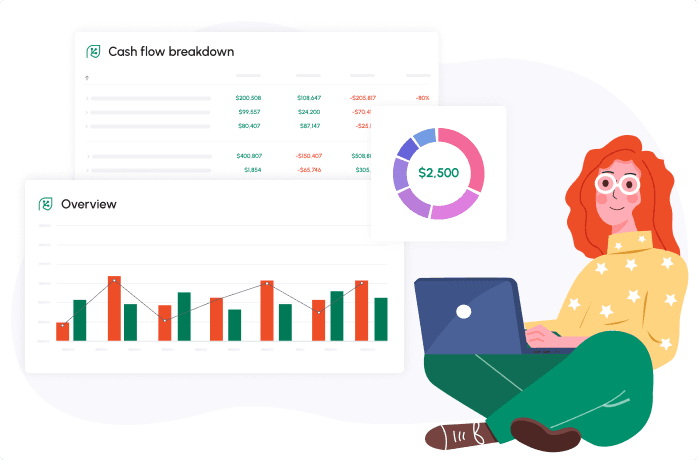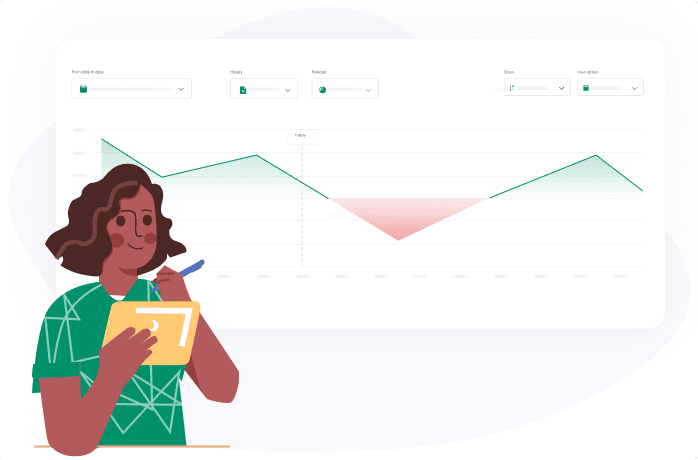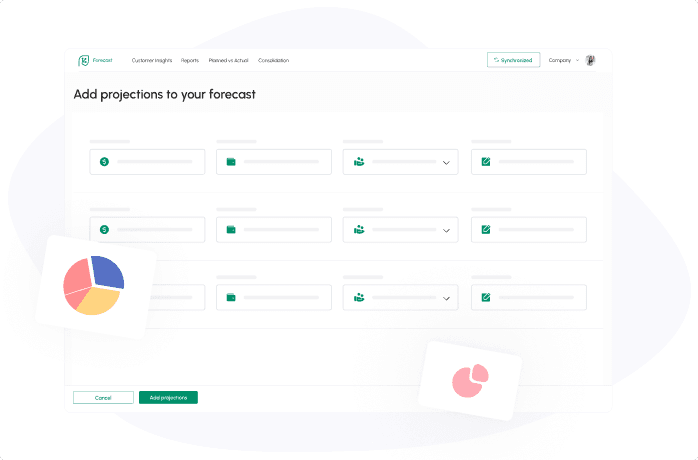
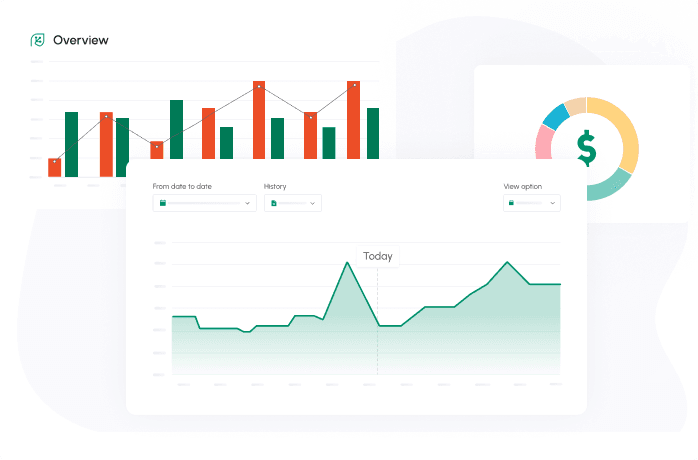
Cash flow metrics are crucial to helping run a financially healthy business. However, one report shows that 49% of finance professionals find that their data is unreliable. Integrating automation and tools like Cash Flow Frog can provide you with data that is:
- Accurate
- Worthy of influencing decisions
If you don’t know what cash flow metrics are or why you should begin using them, you’ll learn why in the next few sections.
Understanding the Importance of Cash Flow Metrics
The best cash flow metrics won’t make a difference in your decision-making if you don’t know what they are or why they’re important. For small business owners, leveraging CFO services for small business can provide the necessary expertise to interpret these metrics accurately and make informed decisions.
What are Cash Flow Metrics?
Metrics are quantifiable forms of data that you can use to better run your business. Since cash flow relates to the financial health of your business, cash flow metrics will highlight how well or poorly the company is performing.
The Role of Cash Flow Metrics in Financial Analysis
Cash flow metrics, such as operating cash flow, free cash flow and cash flow coverage ratio, all relate to the overall financial health of the company. For example, you may find that your free cash flow is low, so you cannot afford to:
- Purchase new equipment
- Hire new employees
- Invest in new markets
Financial analysis will also rely heavily on these metrics because the expert analyzing the data will try to learn “why” there are issues with your cash flow.
If the metrics are good, financial analysis may find that you have excess money that you can spend on growing operations.
Why Cash Flow Metrics Matter for Business Success
Business success relies on your cash flow margin. If you’re not making enough money to cover expenses, it will be challenging to remain in operations. Metrics help you better understand your business’s:
- Strengths
- Shortcomings
- Areas that can use improvement
Every decision that you make is better if you have data to support it. For example, if you have the opportunity to purchase a competitor and your free cash flow metric shows that you have more than enough cash, the investment may be a smart choice if the company you’re acquiring also has strong financials.
You may also find that you can barely cover expenses already and the acquisition would put too much stress on your company.
Owners and stakeholders need to know the most critical metrics to analyze so that they can make sense of their cash flow statements.
Key Cash Flow Metrics to Analyze
Which metrics should you know and monitor? The following are the most important when making smart business decisions.
Operating Cash Flow (OCF) Explained
OCF is listed on your cash flow statement and doesn’t include:
- Revenue from investments
- Revenue from interest
Instead, this is the movement of cash in and out of your operations. If you have a strong OCF, you have more than enough money to continue operations without needing a loan. You can use this metric to decide to:
- Hire new employees
- Pay off debt
- Purchase new equipment
- Etc.
Free Cash Flow (FCF) and Its Significance
FCF is another metric for you to know and understand. High FCF means that you have the funds to:
- Invest in growth opportunities
- Pay dividends
FCF is the amount of liquidity that you have remaining after you’ve paid for equipment, short-term liabilities and property purchases.
If you want to do any of the following, look to see if your FCF is high:
- Pay off debts
- Secure funding from lenders
- Make strategic investments
Cash Flow Margin - Assessing Profitability
Cash flow margins, often called operating cash flow margins, are your business’s measure of profitability. The margin shows the following:
- Sales to cash conversion
- Measurement of cash from operating activities
Your margins show how profitable your business is and your ability to turn sales into cash. If you have a high percentage (for example, 60% margins), you have a highly profitable business.
Cash Flow Coverage Ratio for Financial Health
Also known as CFCR, this ratio is your ability to pay debts using the cash from operations. You can find this ratio by tallying cash flow from operations and total debt. You'll then divide your cash flow from operations by total debt and multiply it by 100.
Interpreting Cash Flow Trends
If you can confidently interpret your cash flow trends, you can make low-risk decisions and grow your company into a conglomerate.
Identifying Positive and Negative Cash Flow Patterns
Positive and negative cash flow patterns show you when:
- Cash flow is high, and investing may be worthwhile
- Cash is low and you may need funding to cover costs
If you use historical data, you may find that your cash flow is on a downward trend and it’s due to low sales in one sector. Learning these key insights will empower you to make strategic financial decisions to keep operating without insurmountable debt.
Projecting Future Cash Flows Based on Historical Data
Tools and technology, or manual calculations, can use your business’s historical data to determine future cash flow. For example, you may find that over the past three years, cash flow increased 10% in the second half of the year.
You can use this data to forecast how much free cash flow you’ll have this year.
Interpreting trends and monitoring them will empower you to know when the time is right to invest in new equipment, expand into new markets or even lower your workforce.
Understanding Seasonal Cash Flow Variations
Finally, when you interpret your cash flow, you can also determine seasonal variations. Perhaps your business receives 60% of its yearly revenue over a three-month period. Knowing that there’s a high and low seasonal variation will allow you to create strong budgets that keep cash in your business even during slow periods.
You can use all of these metrics and the data that you collect to also do something else: assess how sustainable your cash flow is.
Assessing Cash Flow Sustainability
Cash flow sustainability means that a business is generating enough income to cover its operating expenses, sustain growth and take action when strategic opportunities arise.
Sustainable cash flow is more than just being able to stay afloat. It’s thriving.
But what do you measure and predict sustainable cash flow?
How to Measure and Predict Sustainable Cash Flow
Measuring and predicting sustainable cash flow can be achieved through cash flow forecasting. Accurate and regular forecasting can help a business assess its future cash position and the sustainability of its cash flow.
Accurate forecasting must take into account market trends and business cycles that will impact sales and revenue.
Improving Cash Flow Sustainability Strategies
The following strategies can help improve cash flow sustainability.
- Managing costs strategically
- Efficient management of accounts receivable and payable
- Incorporating cash flow management into your strategy
Maximizing income and minimizing expenses will help maximize your cash flow, helping it become more sustainable over time.
Cash Flow Ratios for Investment Evaluation
Along with the cash flow metrics above, it’s important to understand cash flow ratios when evaluating investments.
In addition to cash flow leverage – which is the ratio of operating cash flow to total debt – you should be evaluating the following ratios:
Payback Period - Evaluating Investment Recovery Time
The payback period will give you an indication of how quickly you’ll recoup your investment. The shorter the payback period, the more attractive the investment.
Payback periods are calculated by:
- Dividing the investment amount by the annual cash flow
While the payback period can be a useful measure for assessing an investment, it doesn’t take into account the time value of the money.
Net Present Value (NPV) and its Relation to Cash Flow
An investment’s NPV provides a snapshot of its total value. The aim is to:
- Project all future cash inflows and outflows of the investment
- Discount all future cash flows to the present day
- Add these two figures together
The sum is the investment’s NPV. If the NPV is positive, it suggests that you will earn money from the investment.
When calculating NPV, future cash flows are discounted to take into account the time value of money.
Internal Rate of Return (IRR) - Analyzing Profitability
The IRR is a metric used to estimate the profitability of an investment. It's a discount rate that makes the NPV of cash flows equal to zero in a discounted cash flow analysis.
If you want to calculate the IRR of an investment, you’ll use the same formula as NPV.
It’s important to note that IRR is not the dollar value of the project. Rather, it’s the yearly return that makes the NPV equivalent to zero.
As a general rule of thumb, the higher the IRR is, the more attractive the investment.
Understanding cash flow ratios is important, but it’s equally important to avoid the top mistakes used in cash flow analysis.
Top Mistakes to Avoid in Cash Flow Analysis
Cash flow analysis can play an important role in financial decision making, but to avoid making a poor decision, it’s important to follow the right steps and avoid making these mistakes:
Overlooking Non-Cash Items in Cash Flow Statement
One of the most common mistakes in cash flow analysis is overlooking non-cash items. When non-cash transactions are disclosed, they may be tabular or included at the bottom of the cash flow statement. Both locations are easy to overlook. It’s important to ensure that you’re keeping these items in mind when analyzing your cash flow.
Non-cash transactions may also be improperly included in a cash flow statement as if cash had changed hands. For example, if you took out a loan to purchase a company vehicle, you may improperly include the gross purchase price in the investing section and the note balance in the financing area. However, in this particular scenario, no cash actually changed hands.
Pay careful attention to non-cash items during your analysis to ensure that you’re not overlooking or misinterpreting data.
Ignoring the Importance of Timely Invoicing and Collections
Another big mistake that businesses make when analyzing their cash flow is ignoring their invoice timing.
How quickly do you send out invoices after completing an order or service? If you’re not sending invoices right away, you’re waiting too long.
The sooner invoices are sent out, the quicker your business will get paid – helping prevent potential cash flow shortages.
Along with your invoice timing, pay attention to your collections process. Are you sending out payment reminders for invoices that are overdue? Setting up automated reminders will simplify this process.
Offering incentives for timely payments and establishing payment terms can help ensure that your business is getting paid as quickly as possible.
Failing to Adapt Strategies Based on Cash Flow Trends
Your business’s cash flow trends give you an indication of where you’re headed financially. Depending on the direction you’re going, you should be adjusting your strategies to ensure you’re headed towards your goals.
If recent cash flow trends are pointing towards a cash shortage in the near future, adapting your strategies today to improve revenue and reduce expenses may help you avoid it.
Cash flow analysis can give you helpful insights, but those insights are only useful if you adapt your strategies.
Conclusion: Mastering Cash Flow Metrics for Financial Success
Learning how to evaluate and master cash flow metrics will put your business on track for financial success. Use the guide above to assess the sustainability of your cash flow, avoid common mistakes and learn how to analyze the top metrics.
Related posts:
You may be interested:
New:



